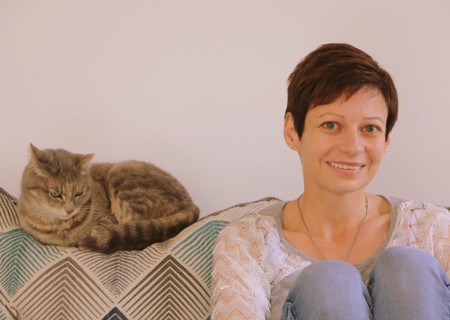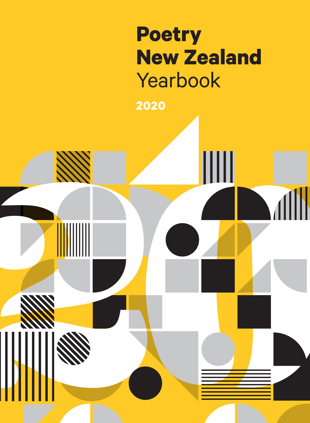Q1: Jack Ross invited you to be the guest editor of the 2020 edition of Poetry New Zealand Yearbook. Terrifying? Or a great opportunity?
Dame Chris Cole Catley (1922–2011), whom I admired greatly, always said that when presented with an invitation to try something new, answer ‘Why not?’ I enjoy editing. My friend Ros Ali and I have edited a couple of anthologies of young people’s writing, and nine editions of the Young Writers Programme annual, Signals, so I know what’s required and how to go about the task. What could be so terrifying about editing the work of adults as opposed to editing the work of teenagers? Possibly, a few of the responses to rejection letters . . .
Q2: Looking back on your selection now the book is about to go to print, how would you describe it?
Let me put it this way: I think that if readers were to place little tags on the poems they really like while they were reading PNZ 2020, they’d end up with a book full of little tags. Usually, when I buy a new anthology, I end up with five or six book-marked pages. This selection is a delight. It’s value for money.
Q3: Selecting the poems for the Yearbook is always a huge task. How many submissions did you review?
Two hundred and eighty-eight people submitted, and on average, they would have been sending three or four poems apiece, so let’s say about a thousand poems.
Q4: What were you looking for?
Poems that moved me. Poems that elicited some bodily response. Anything that could not hold my attention for its entirety was allowed a second read, but the poems which gripped or surprised me made it straight into the ‘yes’ pile. It is not easy to spark something in a reader–curiosity, empathy – but innovative use of language, structure or narrative perspective can do that, and leave her thinking about the lines long after the poem has been put away. I approached the selection of pieces for this edition of Poetry New Zealand as I would approach putting together an anthology of poems which I’d like to read over and over again. I wanted ‘bang for my buck’ from every piece.
Q5: Were your goats any help at all in this process?
They were hugely helpful. One, perhaps, more than the rest. The first poem to make it into the yearbook was a commission of sorts. In an email to C. K. Stead, I bemoaned the current state of goat poetry. Nek minute, his wonderful piece, ‘Goats’ arrived in my inbox. In it is a reference to a truly awful but comedic photograph of my goat Rosie and me that he published on his Laureate’s blog: http://www.poetlaureate.org.nz/2017/05/
Q6: As Jack has done in previous editions, you’ve given some poets more than one poem. How so?
Some of the poems seemed to belong as a ‘set’. For example, Chris Tse’s ghost poems and Ivy Alvarez’s poems based on Filipino sayings. In other cases, the work was so strong and good that I had to take multiple pieces.
Q7: This year’s featured poet is essa may ranapiri. Their work is so exciting. What do you most admire about it?
essa’s work is very honest. It is also stylistically skilled and innovative. They are an all-rounder and an impressive newcomer, and I like to give airtime (print-time) to good poets with something of import to say. essa’s work touches on mental health, politics, language and gender. The work is so affecting that it could change a mind.
Q8: It’s great to see established poets such as Kevin Ireland, C. K. Stead and Elizabeth Smither still nailing it. What can young poets learn from them?
So many things. But one thing in particular is their attention to form. The three poets often frame their work in structures which brace them apparently effortlessly. These poets can also be admired more generally for their humility, their attitude to poetry as a vocation, and for their generosity in mentoring younger writers.
Q9: And speaking of young poets, what directions are they mostly heading in do you think?
Spoken Word and Instagram have brought more young people into poetry in the last few years in particular, which is excellent. There is a current trend in young people’s writing for the discursive and the confessional, as well as for a narrative voice inflected with the assonantal chimes of Spoken Word.
It is encouraging to see a lot of young people using poetry to explore issues of race, environment and social inequality, and finding it a useful way to address complex and conflicting ideas. In our latest issue of Signals, my colleague Ros Ali and I have been pleased to see new themes addressed – notably, issues of significance to the LGBTQI and disabled communities, in addition to a growing focus on mental health awareness. We are seeing a greater readiness among young people to speak out using poetry as a polemical medium.
Q10: Which poetry books are on your bedside table?
Ilya Kaminsky’s Deaf Republic, Roger Robinson’s A Portable Paradise, Maggie Nelson’s Good Bones, and Elizabeth Morton’s This is your real name.


